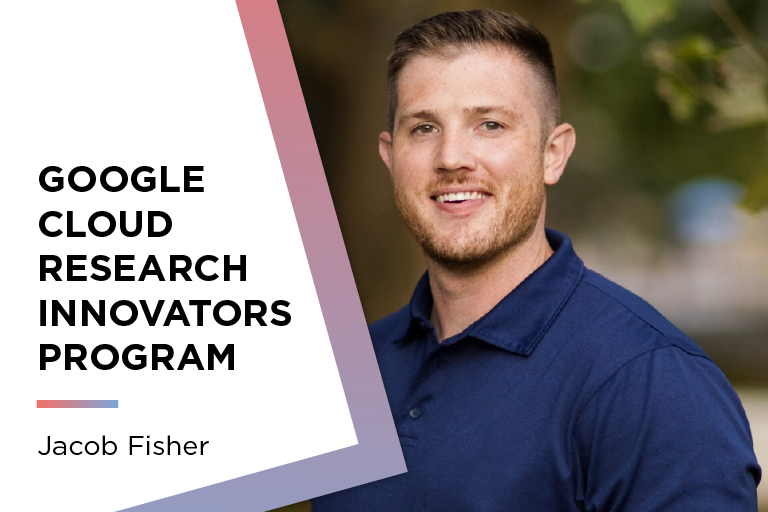Assistant Professor Jacob Fisher is a researcher at the intersection of cognitive neuroscience and media psychology. He was one of 23 scholars nationwide chosen for the 2024 Google Cloud Research Innovators cohort, a program that supports researchers using Google Cloud services to tackle real-world problems.
Game on, brain on
Fisher is the mind behind Asteroid Impact, a custom-built game designed to test how players respond to different types of cognitive and perceptual load.
“It’s a game that I can use to study how people pay attention, how people multitask, how people switch their goals back and forth between different tasks in this sort of motivating and engaging context,” Fisher said. By pairing gameplay data with functional neuroimaging, he’s investigating how the brain’s network efficiency changes during demanding tasks — and how those changes might differ in people with attention-deficit/hyperactivity disorder.
This work fills crucial gaps in both ADHD research and in media psychology. Fisher’s study is among the first to test both cognitive and perceptual load in the same naturalistic environment, and to actually link those behavioral differences to what’s happening in the brain. His team’s findings contribute to a growing body of evidence suggesting that ADHD-related differences in cognitive function and behavior aren’t fixed, but shift depending on task design.
“We found that as we introduced cognitive load, folks with ADHD were disproportionately negatively affected. But as we introduced perceptual load, it was the opposite,” Fisher said. “Under high perceptual load, the folks with ADHD actually outperformed the folks without ADHD in several ways, and their brain network efficiency was higher.” The findings suggest that it’s possible to reduce some of the challenges ADHD presents by engaging the brain in different ways.
Fisher’s approach shows how rethinking the structure of a task can uncover hidden cognitive strengths and reshape how we study attention, behavior and the brain. Tying those changes in performance to shifts in brain network efficiency could offer new ways to understand ADHD at a biological level and even predict how someone might respond to treatment.
Cloud-powered cognition
“A lot of the analyses that I do, especially in the brain imaging area, physically can’t be run on a single computer,” Fisher said, noting that he took a few computer science courses while completing his Ph.D. and he taught himself the rest. “I had to figure it out along the way to learn how to do the high-performance computing side and also pick up the skills that I needed to develop Asteroid Impact.”
Fisher explained that Asteroid Impact was originally developed in Python, which required participants to be physically present in the lab. During the COVID-19 pandemic, the team redeveloped Asteroid Impact in Unity so participants could play remotely, and Fisher was able to use a JavaScript API to send research data to the Unity Cloud service.
“Unity Cloud works just fine, but it’s actually not really designed for what I’m using it for,” Fisher said, noting that it’s intended to collect more marketing-adjacent analyses relevant for the commercial video game industry, collecting perhaps a few hundred unique data points per day.
With Asteroid Impact, however, Fisher is recording data every roughly 16 milliseconds. “If somebody is playing one round of Asteroid Impact, it’s generating several hundred thousand rows of unique data,” he said. “With Unity Analytics, I’ve had to do a bunch of kind of ‘hacky stuff’ on the back end to get it to record data in the way that I want.”
Instead of having to combine multiple services across different providers, Fisher was able to integrate the front end and back end of the game into the same development and storage environment.
“I think they were really interested in the applications of using Cloud Run, and some of their other cloud services for serving academic research items — things like video games or websites or apps being used for academic research,” Fisher said.
He’s using the support to streamline analyses of Asteroid Impact data and rebuild the game’s infrastructure, migrating it to Cloud Run for smoother deployment, and transitioning its data storage to Cloud SQL to keep everything in one ecosystem. Working with Google Cloud engineers to optimize the game’s backend helps Fisher ensure each research participant has a seamless experience.
“With something where I’m collecting data every 16 milliseconds, it’s just super important that everything is humming at the at the right pace, because if I’m missing data, it becomes harder to do the analyses that I’m doing,” Fisher said. “Getting that database backend reengineered for Asteroid Impact is going to be the thing that I’m most excited about in the process.”
With Google Cloud’s backing, Fisher’s team is planning follow-up studies that build on the early findings — work that could influence everything from academic theory to the design of digital learning tools and clinical interventions. His goal: to push forward research that not only measures attention but designs for it.
This story originally appeared on the Comartsci website.
